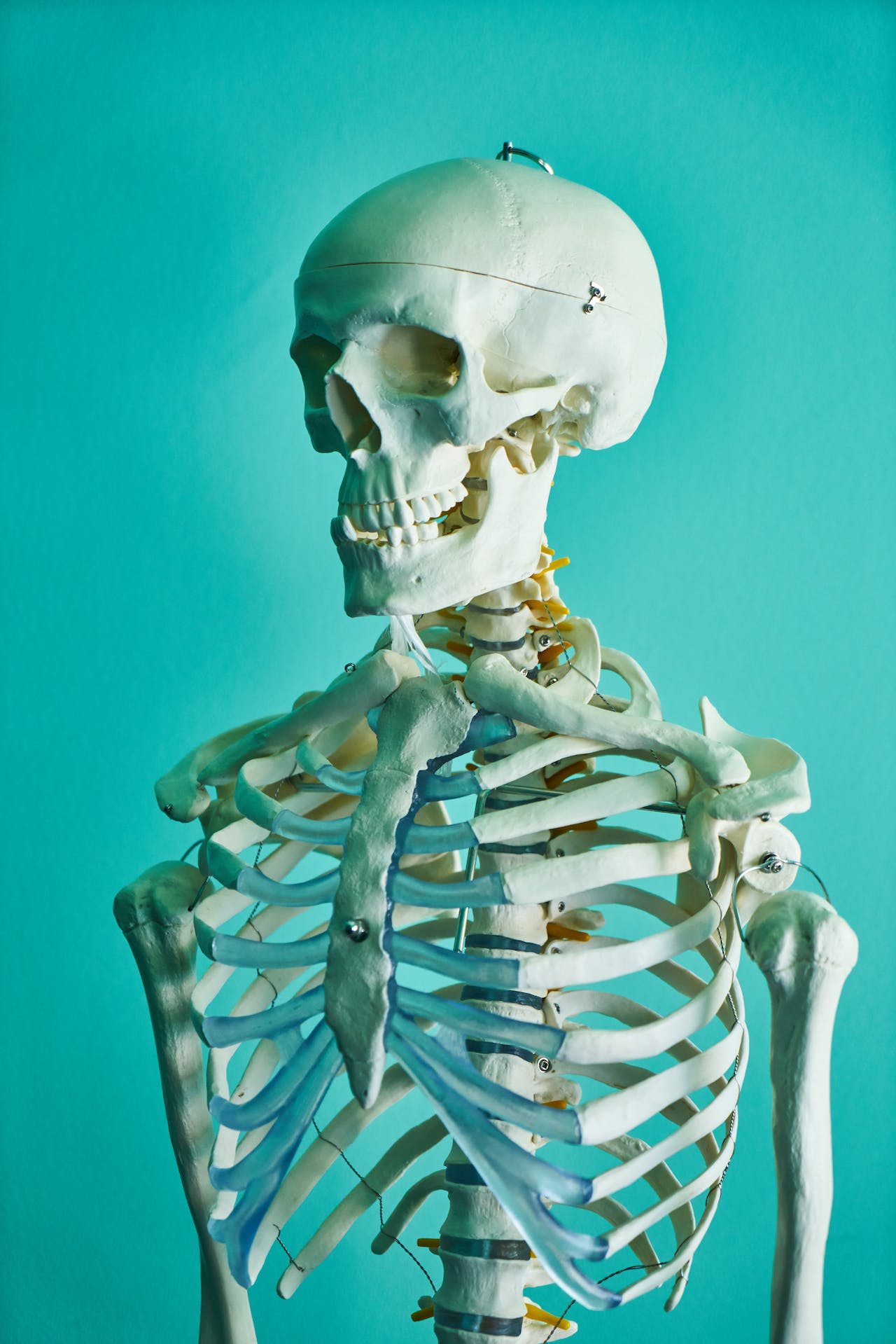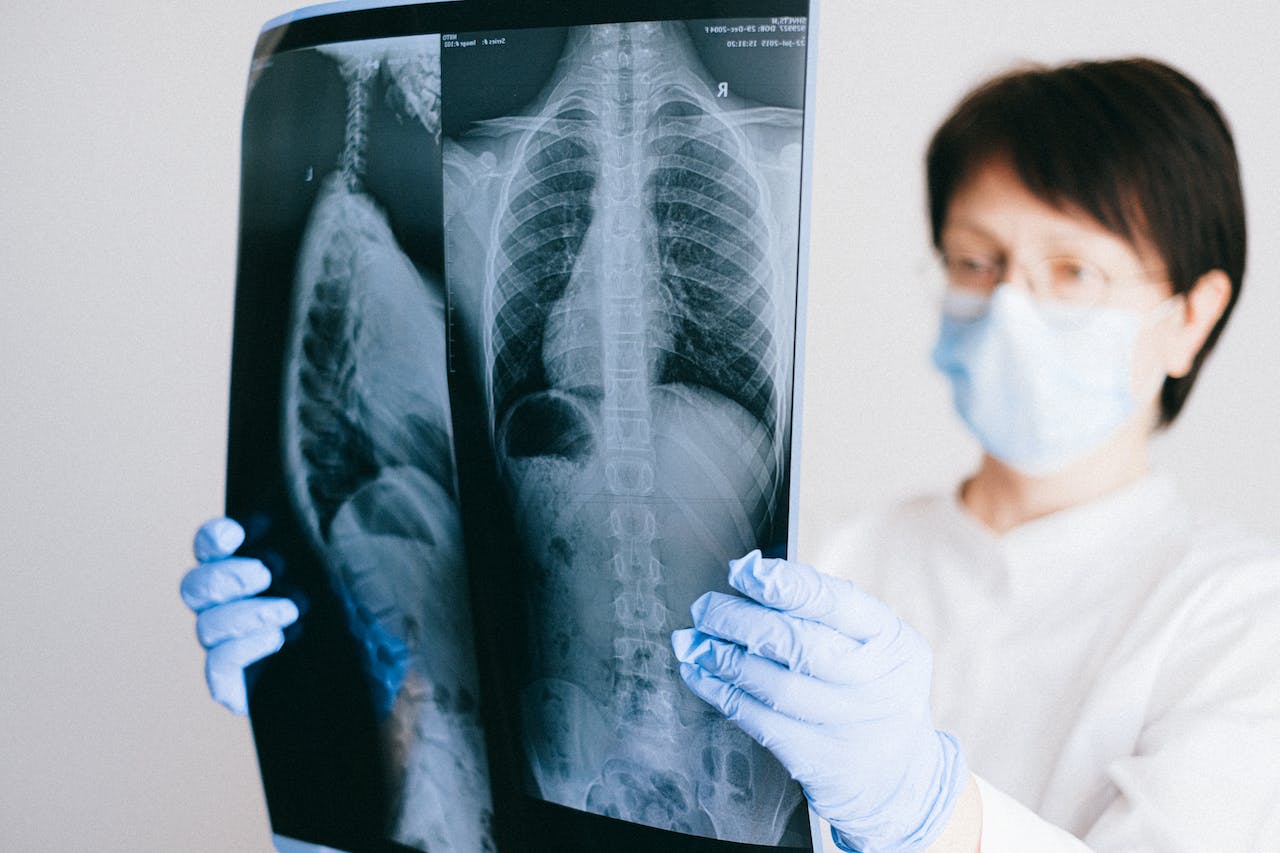TL;DR: Key Takeaways on Treating Osteoporosis
- Medications: Bisphosphonates, hormone therapies, and monoclonal antibodies are commonly prescribed to improve bone density and reduce fracture risk.
- Calcium and Vitamin D: Adequate intake of these nutrients is essential for maintaining bone health, either through diet or supplements.
- Physical Activity: Regular weight-bearing and muscle-strengthening exercises help build bone strength and improve balance.
- Dietary Adjustments: Incorporating foods rich in bone-healthy nutrients, balancing protein intake, and limiting sodium and caffeine are crucial for bone health.
- Lifestyle Changes: Quitting smoking and limiting alcohol consumption are important for reducing bone loss.
- Regular Bone Density Testing: Monitoring bone health through periodic scans is essential for early detection and treatment.
- Fall Prevention: Implementing safety measures at home and engaging in balance exercises can significantly reduce the risk of fractures.
- Personalised Treatment Plans: Collaboration with healthcare providers is crucial for tailoring treatment to individual needs.
These strategies collectively contribute to effectively managing osteoporosis, reducing fracture risks, and promoting better bone health.
What is Osteoporosis?
Osteoporosis is a medical condition characterised by weak and fragile bones. It occurs when the body loses too much bone, makes too little bone, or both. As a result, the bones become brittle and prone to fractures. Osteoporosis is often referred to as a silent disease because it does not cause any symptoms in its early stages. However, as the condition progresses, individuals may experience symptoms such as pain, loss of height, and a stooped posture. Fractures are also a common complication of osteoporosis, with the most commonly affected areas being the spine, hips, and wrists.
It is important to diagnose and treat osteoporosis early to prevent further bone loss and reduce the risk of fractures. Regular exercise, a healthy diet, and medications are some of the treatment options available to manage and treat osteoporosis. If you are concerned about your bone health, it is advisable to consult with a healthcare professional for an accurate diagnosis and personalised treatment plan.
Factors Contributing to Osteoporosis and Increased Fracture Risk
Several factors contribute to the development of osteoporosis, and the associated increased risk of fractures:
- Age: Bone density typically decreases with age, making older individuals more susceptible to osteoporosis.
- Gender: Women are at a higher risk than men, particularly after menopause, due to reduced oestrogen levels.
- Family History: A familial history of osteoporosis or fractures indicates a higher personal risk.
- Medical Conditions: Conditions like rheumatoid arthritis, inflammatory bowel disease, and coeliac disease can elevate the risk.
- Medications: The use of corticosteroids and certain anti-seizure medications can contribute to bone weakening and loss.
- Lifestyle Factors:
- Lack of physical activity can lead to weaker bones.
- Smoking and excessive alcohol consumption negatively impact bone health.
- A diet low in calcium and vitamin D is a significant risk factor.
Assessing Your Risk
To evaluate your personal risk for osteoporosis, consider using the Royal Osteoporosis Society’s risk checker. This tool allows you to input details like age, gender, family history, medical conditions, and medication usage to assess your risk level. You can access the risk checker at Osteoporosis Risk Checker.
Understanding these factors is essential in managing and preventing osteoporosis, thereby reducing the risk of fractures.

Symptoms of Osteoporosis
Osteoporosis is often called a silent disease because it can progress without any symptoms until a bone breaks. However, some warning signs and symptoms can help in early detection and natural management strategies to treat osteoporosis.
Early Symptoms
- Gradual Loss of Height: A decrease in height over time can be an indicator.
- Back Pain: Caused by fractured or collapsed vertebrae.
- Stooped Posture: A noticeable change in posture may suggest spinal bone loss.
- Bone Tenderness or Pain: General discomfort in bones can be an early sign.
Advanced Symptoms
- Frequent Fractures: Susceptibility to fractures from minor falls or even simple actions like coughing or bending over.
- Severe Back Pain: New or worsening back pain can indicate a vertebral fracture.
How To Treat Osteoporosis
Treating osteoporosis involves a multifaceted approach that aims to slow bone loss, increase bone density, and prevent fractures. Key strategies include:
- Lifestyle Modifications: Incorporating weight-bearing and balance-improving exercises into daily routines strengthens bones and enhances balance, reducing fall risks.
- Dietary Adjustments: Ensuring a sufficient intake of calcium and vitamin D is vital. These nutrients, essential for bone health, can be obtained through diet or supplements.
- Medications: Depending on individual needs and medical history, healthcare professionals may prescribe medications such as bisphosphonates, hormone therapies, or monoclonal antibodies. These treatments improve bone density and lower the likelihood of fractures.
Collaboration with healthcare providers is critical in tailoring a treatment plan that best suits individual needs, helping maintain healthier bones and significantly lowering fracture risks.
Lifestyle Changes to Reduce Risk of Fractures
Effective lifestyle changes can significantly lower fracture risks, particularly in individuals with osteoporosis:
- Regular Physical Activity: Engaging in activities like walking, dancing, or jogging, which are weight-bearing, helps enhance bone strength.
- Avoiding Tobacco and Limiting Alcohol: Smoking and excessive alcohol use can weaken bones. Eliminating these habits contributes to better bone health.
- Targeted Approaches for the Elderly: Older adults should focus on exercises that improve balance and coordination, like tai chi or yoga, to minimise fall risks.
- Fall Prevention Measures: Implementing simple home safety measures such as decluttering, installing handrails, and improving lighting can significantly reduce fall risks.
By adopting these proactive lifestyle changes and consulting with healthcare professionals, individuals can effectively maintain bone health, reduce fracture risks, and improve their overall quality of life.

Dietary Adjustments for Osteoporosis
Calcium and Vitamin D Intake
- Calcium: Essential for bone health, found in dairy products, green leafy vegetables, nuts, and fish with bones.
- Vitamin D: Aids in calcium absorption, sourced from sunlight, oily fish, liver, fortified foods, and supplements.
Protein Intake
- Adequate Protein: Necessary for bone health, available in lean meats, poultry, fish, dairy, legumes, and nuts.
Phosphorus Balance
- Monitor Phosphorus: Important for bone formation; a balanced diet usually offers adequate amounts without excess.
Magnesium
- Magnesium-Rich Foods: Crucial for bone health, include green leafy vegetables, nuts, seeds, whole grains, and legumes.
Vitamin K
- Vitamin K Sources: Essential for bone formation, found in green leafy vegetables like kale, spinach, broccoli, and Brussels sprouts.
Sodium and Caffeine
- Limit Sodium Intake: High sodium can lead to increased calcium excretion.
- Limit Caffeine: Excessive caffeine can affect calcium absorption.
Healthy Fats
- Omega-3 Fatty Acids: Beneficial for bone health, found in fish, flaxseeds, and walnuts.
Alkaline Diet
- Alkaline Foods: Fruits and vegetables might benefit bone health by reducing calcium loss.
Hydration
- Adequate Water Intake: Essential for overall health and supports bodily functions.
Alcohol Consumption
- Limit Alcohol: Excessive alcohol can disrupt calcium balance and hormone production.
Incorporating these dietary adjustments can contribute significantly to bone health and the management of osteoporosis. It’s important to consult with healthcare professionals for personalised dietary advice, especially when managing a condition like osteoporosis.

Medications for Osteoporosis
Bisphosphonates
- Function: These drugs slow down or prevent bone loss. They work by inhibiting osteoclasts, cells that break down bone tissue.
- Examples: Alendronate, Risedronate, Ibandronate, Zoledronic acid.
- Usage: Typically prescribed for postmenopausal women and men with osteoporosis.
Hormone Therapies
- Oestrogen Therapy or Hormone Replacement Therapy (HRT): Primarily for postmenopausal women, these therapies can maintain bone density and reduce the risk of hip and spine fractures. However, they are used less frequently now due to potential risks and side effects.
- Testosterone Therapy: In men with osteoporosis, testosterone therapy might be considered if testosterone levels are low.
Monoclonal Antibodies
- Denosumab: A monoclonal antibody that works by slowing bone breakdown. It’s administered via injection every six months and is suitable for those who can’t take bisphosphonates.
- Romosozumab: Another monoclonal antibody, used for severe osteoporosis in postmenopausal women with a high risk of fracture. It works by blocking the protein sclerostin, enhancing bone formation and reducing bone resorption.
Other Medications
- Selective Oestrogen Receptor Modulators: Raloxifene is an example, which mimics oestrogen’s beneficial effects on bone density in postmenopausal women without some of the risks associated with oestrogen therapy.
- Parathyroid Hormone-Related Protein (PTHrP) Analogs: Teriparatide and abaloparatide, which stimulate bone growth and are used for severe osteoporosis.
These medications are selected based on individual factors like age, gender, the severity of osteoporosis, risk of fractures, and personal medical history. Regular consultations and follow-ups with healthcare professionals are essential to monitor the effectiveness and manage any side effects of the treatment.
Diagnosis of Osteoporosis
Diagnosing osteoporosis involves assessing an individual’s risk factors, reviewing their medical history, and conducting specific tests. Initially, a healthcare provider will discuss the patient’s symptoms, family history, and lifestyle factors, such as diet, physical activity, and alcohol or tobacco use. This information helps to determine the individual’s risk of developing osteoporosis.
Subsequently, a bone density scan, also known as dual-energy X-ray absorptiometry (DXA) scan, is performed to measure bone mineral density (BMD). This test identifies any bone loss and compares the results to a reference population to diagnose osteoporosis. The DXA scan is a painless and non-invasive procedure commonly used to identify low BMD in postmenopausal women and older men.
In some cases, additional tests, such as blood tests or vertebral fracture assessments (VFA), might be recommended to assess overall bone health. It is important for individuals at higher risk of developing osteoporosis, such as postmenopausal women and those with specific risk factors, to undergo regular screenings to detect the condition early and take appropriate steps for prevention or treatment.
Let’s take a closer look at each of these methods of diagnosing osteoporosis.

Bone Mineral Density (BMD) Testing
BMD testing is a crucial diagnostic tool used to assess bone health. The testing process involves different examination methods, including DXA, peripheral DXA (pDXA), Quantitative Computed Tomography (QCT), peripheral Quantitative Computed Tomography (pQCT), and Quantitative Ultrasound (QUS).
During BMD testing, your bone mineral density is measured and expressed in grams of mineral per square centimetre of bone. The results are then compared to the average values of BMD for normal, healthy adults of your gender and age group. The comparison is made using two scoring systems: the Z-score and the T-score.
The Z-score compares your BMD to the average values for individuals of the same age and gender. A Z-score below -2 indicates low bone density compared to your peers. The T-score compares your BMD to the average values for young, healthy adults of the same gender. A T-score below -1 indicates osteopenia (low bone mass), while a T-score below -2.5 indicates osteoporosis.
Common sites for clinical BMD testing include the lumbar spine (L1-L4) and the femoral neck (hip). These sites are chosen because they are particularly susceptible to fractures associated with osteoporosis.
BMD testing plays a vital role in the diagnosis and management of osteopenia and osteoporosis. It helps healthcare providers determine fracture risk and provides valuable information for developing an appropriate treatment plan.
Vertebral Fracture Assessment (VFA)
VFA is a vital procedure in diagnosing osteoporosis. It is a non-invasive imaging technique that helps identify vertebral fractures and evaluate the severity of bone loss. VFA is particularly important because vertebral fractures often go unnoticed and can remain undiagnosed without specific testing.
During a VFA, a specialised X-ray machine captures images of the spine, focusing on the vertebral bodies. The patient lies on a table while the machine takes images from various angles. These images are then examined by healthcare professionals to detect any fractures or abnormalities.
Indicators of vertebral fractures that healthcare professionals look for in VFA images include crumbling of the vertebral body, loss of height or change in shape of the vertebrae, and the presence of fractures within the vertebrae. In addition to identifying fractures, VFA provides measurements such as vertebral height ratios, which compare the height of the fractured vertebra to adjacent normal vertebrae. These measurements help quantify the severity of the fracture and assist in determining appropriate treatment options.
VFA is a valuable tool in diagnosing osteoporosis as it allows healthcare professionals to identify vertebral fractures that may not be visible on regular X-rays or may not cause noticeable symptoms. Early detection of vertebral fractures can help initiate timely treatment to prevent further bone loss and reduce the risk of subsequent fractures.
Conclusion
In summary, managing osteoporosis is a multifaceted approach that requires a combination of lifestyle changes, dietary adjustments, and, when necessary, medical intervention. From engaging in regular physical activity to ensure adequate intake of key nutrients like calcium and vitamin D, each strategy plays a crucial role in strengthening bones and reducing the risk of fractures. Medications, tailored to individual needs, offer additional support in preserving bone density and enhancing overall bone health.
Osteoporosis, often termed a ‘silent disease’, can significantly impact quality of life. However, with the right measures and a proactive approach, individuals can effectively manage the condition, maintain an active lifestyle, and reduce the likelihood of bone-related complications.
As we continue to advance in our understanding of osteoporosis, the importance of early detection, education, and patient-centred care becomes increasingly clear. By staying informed and adopting a comprehensive approach to treatment and prevention, those affected by osteoporosis can look forward to healthier, more resilient bones and a future with fewer limitations.

